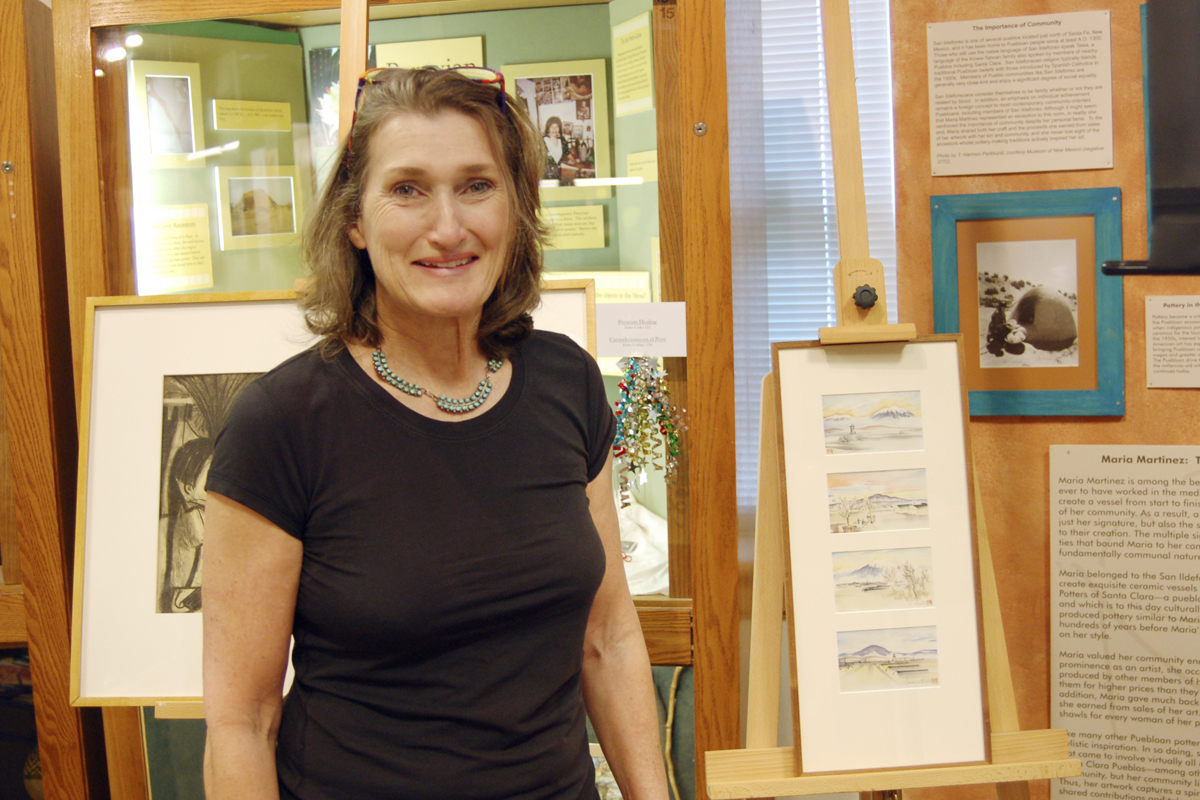History of Utah internment camp comes to USU
Jennifer Coulson, a museum studies intern majoring in art, handed out pieces of 14-by-17-inch construction paper and asked youth to draw what they would take with them if they only had one day to pack their belongings and move away from home.
This was one of the realities for the Japanese living in America during World War II, said Jane Beckwith, the director for the Topaz Museum in Delta, Utah. The museum seeks to preserve the history of the Topaz Japanese internment camp that was located near Delta, Utah.
The USU Museum of Anthropology invited Beckwith to present the history of Topaz and artwork that was created inside the internment camp as part of the weekly “Saturdays at the Museum” program.
“We wanted something tangible that would give a much more full experience and would explore the life these people led,” said Monique Pomerleau, museum curator.
Melissa Allen, a senior majoring in history, who invited Beckwith to come present, said she was initially interested in the topic because of the lack of awareness that such a prison camp existed in Utah.
“It just baffles me that we had something like that in the United States,” Allen said, “It’s no different than persecuting the Jewish people because they were Jewish.”
Allen said she hopes we can learn from this episode in our history and avoid making the same mistakes again.
“We’ve learned our lesson about the Japanese, we’re not going to beat them up again,” said Beckwith. “But have we learned the same thing about the Muslim people?”
More than 110,000 people of Japanese ancestry – two-thirds of whom were U.S. citizens – were imprisoned during World War II, Beckwith said. More than 11,000 of them were sent to the internment camp in Topaz, making it the fifth-most populous city in Utah at the time.
The conditions were primitive and harsh, Beckwith said, but they still functioned as a normal society, forming schools, sports teams and art classes.
Beckwith said Chirua Obtata, a successful Japanese artist, set up an art school inside Topaz that held 90 classes per week and educated 600 internees. Currently the Topaz Museum possesses 70 pieces of art created during this period, Beckwith said.
Allen said part of the goal of the exhibit was to acknowledge the reality of a dark piece of America’s past. “There was propaganda about how the Japanese deserved internment after Pearl Harbor,” Beckwith said, “The mantra was, ‘Just because the Japanese haven’t committed any acts of sabotage only proves that they will.'”
DeVonna Bagley, a local resident of Logan who had Japanese neighbors during World War II, said, “There was this feeling at the time that we were supposed to detest them, but how could we? They were our friends.”
Bonnie Pitblado, the museum director, said quality programming such as the Topaz exhibit, has led to a significant increase in museum attendance.
“When we started the ‘Saturdays at the Museum’ program in 2007, we had about 3,000 attendees that year, this past school year we’ve had seven to eight thousand,” Pitblado said.
“The students have been doing it all,” Pitblado said. “They bring whole new ideas to the table from their personal experiences, and they create these exhibits.”
Students and interns from several different schools at USU are currently enrolled in a 24-credit Museum studies program, which is essentially a beefed-up minor, Pitblado said.
She said there aren’t very many programs like this in the United States, and USU has the only one in Utah.
– keaton.reed@aggiemail.usu.edu

